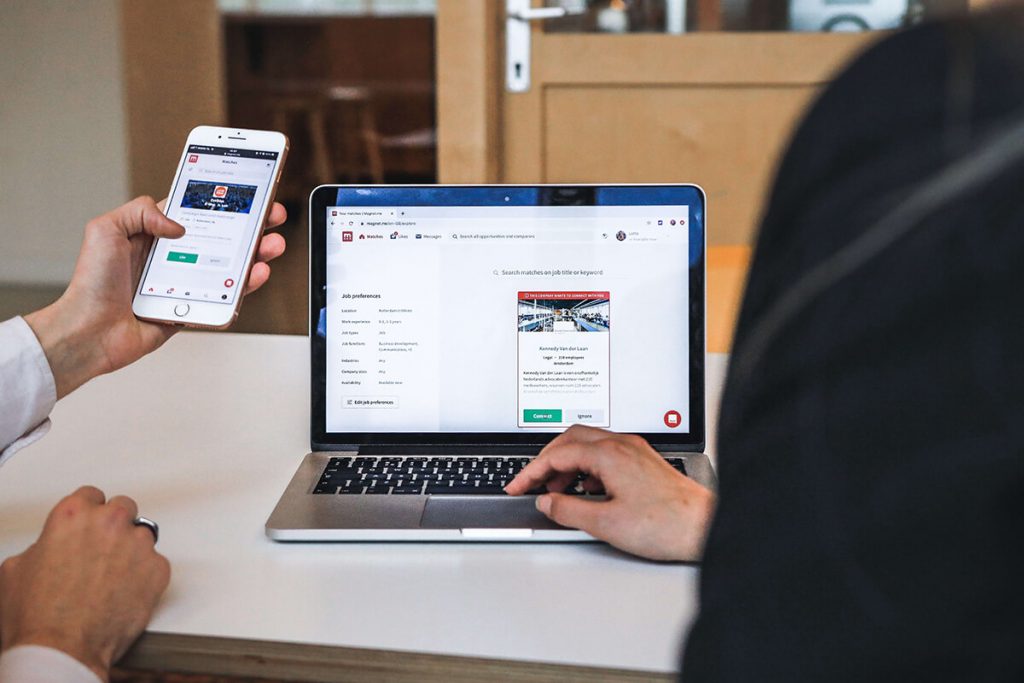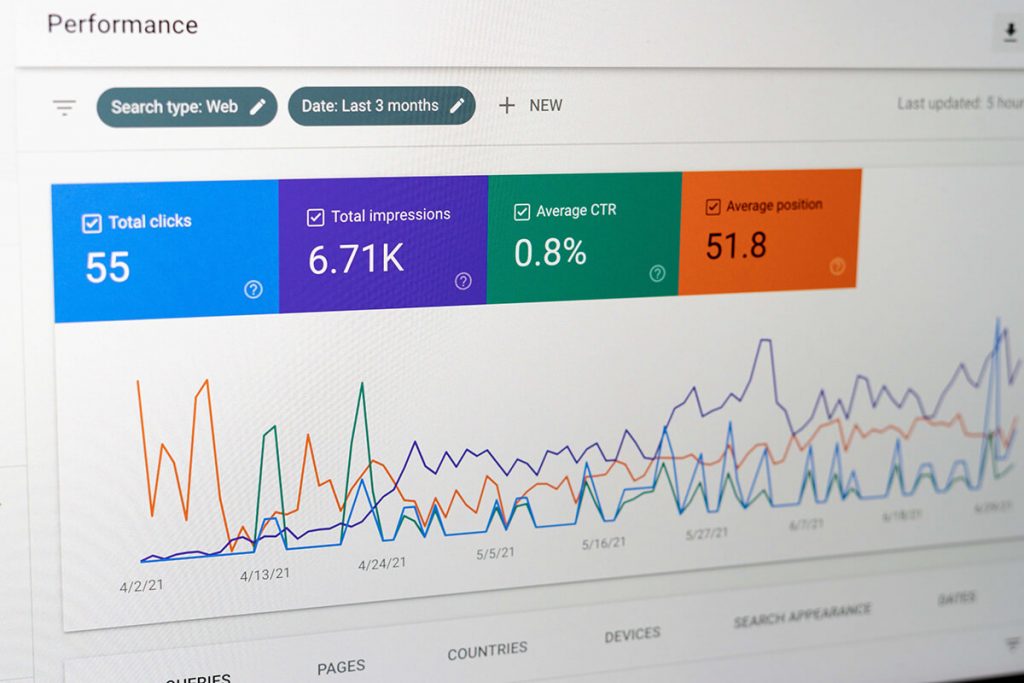
Master the Fundamentals of Professional Web Design
7 Easy Key Points
Learn the secrets of creating beautiful, functional websites with our comprehensive guide to professional web design. Get started now and upgrade your skills!
Introduction
Having a good website is becoming more and more crucial for businesses of all kinds as the online world grows. A professionally designed website not only draws visitors, but it also captures the essence and guiding principles of the business. A website is now a crucial part of any business plan because it frequently serves as the initial point of contact between a firm and potential clients in the digital age.
There are several fundamental elements of skilled web design that must be taken into account in order to produce a successful website. They include an intuitive user interface, quick page loads, simple navigation, and interesting content that appeals to the intended audience. A skilled web designer will also concentrate on developing a layout that is compatible with the business’s branding and messaging.
Moreover, a website needs to be distinctive and memorable in order to stand out from the competition. Innovative design components like original images, animations, or interactive aspects can accomplish this. Prioritizing accessibility and making sure the website is prepared for all screen sizes and devices are also crucial. A competent web design may assist a business in establishing a strong online presence and successfully reaching its target audience by fusing all of these components.
1. User Experience

The most important aspect of expert web design is the user experience (UX). UX is all about making sure the user has a satisfying and easy time using the website. This entails creating a straightforward, logical, and user-friendly website design. Web designers may develop a website that fits user needs, improves user experience, and encourages engagement with the website by putting a strong emphasis on UX.
A website must have an easy-to-navigate, well-organized layout that enables users to locate what they’re looking for in order to provide a positive user experience. This calls for a logical and transparent information architecture with a reliable navigation system that enables users to comprehend their location and how to navigate to their desired location.
The layout should also be visually appealing, with a good balance of white space, typography, and images that improves the website’s overall appearance and feel.
Finally, for a smooth user experience, a website needs to load rapidly. It’s crucial to make sure that the website loads quickly because users tend to leave websites that take too long to load. This can be done by using a content delivery network (CDN) to quickly distribute website material to consumers, optimizing images and videos, and compressing and optimizing files. Web designers can design a website that satisfies user demands and improves their entire experience by focusing the user experience and making it simple to browse, visually appealing, and quick to load.
2. Visual Design
Visual design is the second most important aspect of expert web design. A visually beautiful website may draw users in, hold their attention, and increase conversion rates. The visual style of a website should be unambiguous, simple, and constant throughout. This means that in order to create a cohesive and professional appearance, the use of color, typeface, and graphics should be properly planned and carried out.
In website design, color is crucial. It has the power to arouse feelings, establish the website’s tone, and spark visual attention. Designers should select hues that go well together and reflect the character and principles of the company. Another essential element of visual design is typography. The website should use a clear, simple-to-read font that is used consistently throughout. Also, the font size and spacing ought to be enhanced for readability.

A website’s visual design can also be improved with images and graphics. They can facilitate informational speed-transmission, help break up material, and produce aesthetically engaging experiences. Designers should take care not to include too many or poor-quality photos, as this might increase the time it takes for a website to load. The usage of white space can also improve the website’s overall visual design by giving the information some breathing room and making it simpler to read. Designers may develop a website that is aesthetically pleasing, user-friendly, and successful in reaching its goals by carefully planning and implementing the visual design.
3. Responsive Design

Modern consumers access websites mostly through mobile devices, so responsive website design is essential. A responsive website adjusts its look and content to match the size of the screen, providing readers with a consistent and engaging reading experience across a range of devices. For the website to look good and function properly on any platform, including a desktop, laptop, tablet, or smartphone, responsive design is crucial. The user experience of a website that isn’t mobile-friendly will suffer, and it may turn off potential clients.
Designers use fluid layouts, adaptable pictures, and media queries to create responsive web design. Flexible photos modify their size to match the screen, while fluid layouts make sure that the content of the website adjusts according to the screen size.
The website may determine the screen size of the device using media queries and change the layout accordingly. This method does away with the requirement for a separate mobile version of the website and enables a seamless user experience across multiple devices.
The website should be responsive and mobile-friendly according to the web design so that users may access it whenever they want, from anywhere, on any device. Designers may enhance user experience, boost engagement, and increase traffic to the website by making sure it is responsive. Users expect to be able to access information and services on the go in the fast-paced world of today, and flexible web design is essential to satisfy this expectation.
4. Navigation
The foundation of a good website is its navigation. It is necessary to make sure that consumers can quickly discover the information they need and easily navigate the website. The navigation system ought to be simple, logical, and easy to use, with categories and subcategories that are well defined. The user experience can be greatly enhanced by a well-designed navigation system, increasing the possibility that visitors will visit the website again in the future.
The website should have a search engine in addition to a clean navigation system. Users can utilize this feature to quickly and easily find certain information without having to go through the website’s menu. By helping consumers find what they’re looking for more quickly, a search engine can greatly enhance user experience. This can boost engagement and lower bounce rates.

In the end, a website that is straightforward to use enhances user experience by making it easier for consumers to locate what they are looking for. An effective navigation and search engine can make sure that website visitors have a good time, which can enhance engagement, boost conversion rates, and boost revenue. Prioritizing user experience in web design is crucial in order to produce a website that is simple to use and offers the user value.
5. Content

A website’s effectiveness is significantly influenced by its content. A top-notch website should offer users helpful information that is presented in an interesting and educational way. Users can be kept interested and involved by well-written, understandable, and informative material. Designers can enhance the material with graphics, images, and videos in addition to well-written text to increase reader engagement.
Long text paragraphs can be broken up with multimedia components like images and films, which makes the information more readable and understandable. Designers can help demonstrate key ideas and concepts by using visual components, which helps to make the content more memorable and simpler to recall. By utilizing multimedia in this way, a website can become more interesting and attract more visitors in the future.
In the end, a website’s content should be its main priority and motivating factor. A well-designed website should have interesting and educational content that is presented in an easy-to-navigate fashion. Designers can create a website that is educational and entertaining by emphasizing quality information and including multimedia components, giving consumers a useful tool that they will want to return to repeatedly.
Search engine optimization depends heavily on content (SEO). Websites that offer their users high-quality, insightful, and relevant material are given priority by search engines like Google. A website’s search engine results can increase when it includes well-written and optimized content (SERPs). High-quality content with relevant keywords and phrases can raise a website’s traffic and exposure. Engaging content can also lengthen visitors’ stays on a website, reduce bounce rates, and promote user engagement—all of which can boost a website’s search engine position. Hence, any SEO plan should include the creation of high-quality content as a key component.
6. Search Engine Optimization
Any online business or organization must have professional web design in order to succeed. Search engine optimization (SEO), which entails improving a website to make it more visible on search engines, is a crucial component of web design. Because it makes it simpler for consumers to find a website when they search for pertinent keywords or phrases, SEO is important. Even if a website has high-quality content and is well-designed, it may be hard to find without good SEO.
Professional web design must consider a variety of aspects that influence a website’s ranking on search engines in order to achieve good SEO. These elements consist of the meta tags, visuals, and content of the website. Since search engines employ keywords and phrases to judge how relevant a website is to a user’s search query, content is very crucial.

So, qualified web designers need to make sure that a website’s content is search engine optimized without compromising its overall quality or user experience.
The usage of graphics and images is a vital component of expert web design. While attractive visuals can improve a website’s design and user experience, they also need to be search engine optimized. To aid search engines in comprehending the context and applicability of the visuals, use appropriate file names, alt text, and descriptions. Professional web designers may make sure that a website’s aesthetics support its overall SEO strategy by following these actions.
The meta tags of a website should also be optimized for search engines as part of a professional web design. Meta tags are short pieces of HTML code that inform search engines about a webpage. The title, description, and keywords of a website can be included in this data. It is the responsibility of qualified web designers to make sure that these tags are correct, pertinent, and search engine-optimized so that users may access the website fast and simply. In conclusion, SEO must be included in professional web design in order to produce a website that is both aesthetically pleasing and simple for search engines to find.
Check out this article from TechBusBee to learn what SEO Tools are the best to use.
7. Accessibility

To guarantee that all users can visit a website regardless of their capabilities or constraints, professional web design must prioritize accessibility. This covers users who are hard of hearing, visually disabled, or have other disabilities. All users should be able to access a well-designed website, making it simple for everyone to find the information they require.
Web designers should adhere to best practices for accessibility to achieve this, including providing captions or transcripts for audio and video content, providing text alternatives for non-text content like images or videos, and using color contrasts that are easy to read for people who are color blind. Designers should also think about the layout and structure of the website, making sure that the navigation is simple and understandable and that the material is organized logically.
Businesses can not only improve the user experience for all users by prioritizing accessibility in web design, but they may also expand their reach to a larger audience. Search engines like Google give accessible websites preference in their search results, therefore having an accessible website can also help with search engine optimization (SEO). Designing for accessibility is, therefore, not only morally correct but also wise from a financial one.
Visit TechBusBee to learn how to increase accessibility to your website.
Conclusion
In this extensive article, we have looked at the essential elements of expert web design. Any business needs a great website since it can draw customers in, communicate the company’s beliefs and ideas, and give consumers useful information.
By focusing on user experience (UX), visual design, responsive design, navigation, and content, we can create a website that not only looks great but also provides a positive experience for its visitorsVisitors will remain interested and engaged on a website with a clean, well-organized layout, eye-catching design, and responsiveness to different devices. A search engine should be available to aid visitors in finding the information they need, and the navigation should be simple and simple to use.
A website’s content is what keeps it alive, thus it should be of the highest caliber, be well-written and informative, and be both entertaining and instructional. While search engine optimization (SEO) can assist make the website more apparent on search engines, designers can utilize graphics, photographs, and videos to make the content even more appealing.
Professional web design must also include accessibility because it guarantees that all users, irrespective of their capabilities or constraints, can access the website. All users should be able to access and find the information they need from a well-designed website.
In conclusion, in the current digital era, expert site design is an essential part of any organization. By concentrating on the essential elements covered in this article, we can create a website that represents the company’s image and ideals, attracts visitors, and provides a positive experience for its users.




